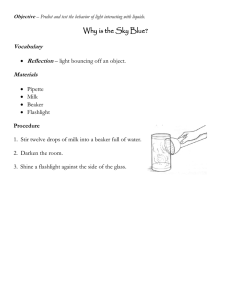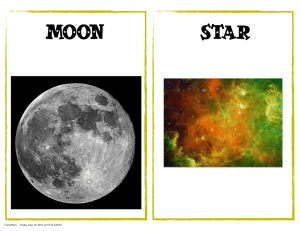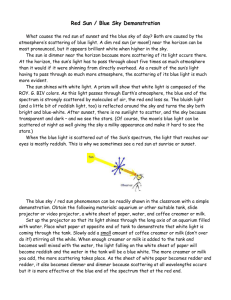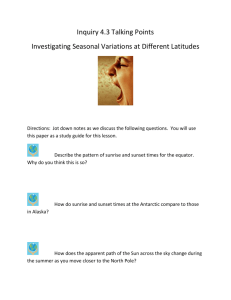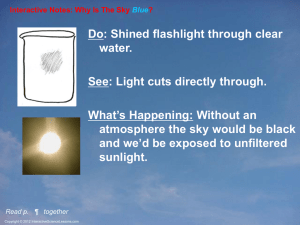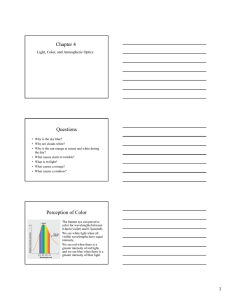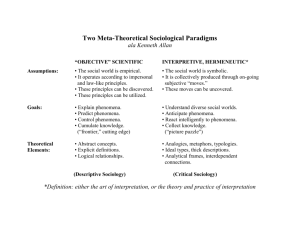Modeling and Light PP - College of Arts and Sciences
advertisement
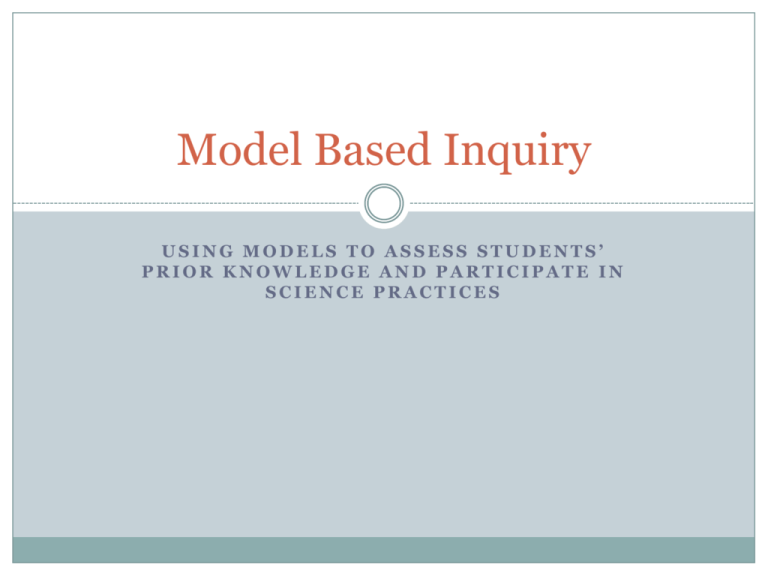
Model Based Inquiry USING MODELS TO ASSESS STUDENTS’ PRIOR KNOWLEDGE AND PARTICIPATE IN SCIENCE PRACTICES Models and Modeling What are scientific models and how do scientists use them? What are some characteristics of “high quality” models? Discuss these two questions with the teachers at your table and write some of the characteristics of high quality models on the post-it papers at your table to share. Examples of Models Scale model (toy airplane) Analogical model (ball and stick model) Symbolic model (Chemical formula) Mathematical model (equation) Theoretical Model (kinetic molecular theory) Maps, diagrams, and tables (periodic table or food webs) Concept-Process Models Simulations High Quality Scientific Models Generate a Model Why is the sky blue and sunsets red? At your table, work together as a group to come up with an initial model that will answer this question. Draw and explain your model on the large paper on your table. (do not touch the materials on the table yet!) Share these initial models with the large group. Evaluate and Modify Model Explore with materials on your table: Shine the flashlight through the glass container with water and have the light hit an index card on the other side. Add a few drops of milk to the water and observe what happens to the light hitting the index card and the color of the water in the glass. Record your observations-then add more milk Explore shining the flashlight through the prism at your table Make observations in your notebook Record your observations Look at different objects through the various colored filters Shine your flashlight through the filters Record your observations Look back at your initial model and modify it to include your new observations Use outside resources if you have them (see color wavelength sheet on table) Color Wavelengths Blue Sky and Red Sunset What happens when light goes through a prism? Blue Sky and Red Sunset Light is refracted—light waves travel at different speeds in different mediums. And different frequencies of light slow down different amounts when they hit a different density medium. So when white light hits a block of glass (prism) the different colors spread out. Milky water set up? Different sized molecules tend to absorb and reradiate some frequencies more than others. Milk molecules are particularly good at absorbing and reradiating blue light (perpendicular to the light— out the side of the bowl) As you add more and more milk, more and more blue light is scattered to the side, and the liquid looks blue. Since blue light is scattered and removed from the beam, the spot of the wall gets redder and redder. On Earth There are small particles in the atmosphere that scatter the sun’s light and make the sky appear blue to us on Earth. At sunset when the sun is low on the horizon, the sunlight passes through more air and more particles, making only those colors with the longer wavelengths visible. Blue and violet have the shortest wavelengths so the increase in particles scatters the blue and violet lights away. Then as the sun begins to set further you lose the ability to see yellow, then orange until finally you’re left with red, which has the longest wavelength. Test your model Predict what should happen when I spin the color wheel. Watch the demonstration at the front of the room Does your model allow you to predict the result? If not, how would you have to modify it? What is Model-Based Learning? Model-Based Learning is a theoretical framework for science education that moves students’ conceptual understanding from preconception or misconception to the attainment of understanding of the target model or desired knowledge state. (Clement, 2000) Model Based Inquiry Science is a process of building, testing, and modifying scientific models. When students participate in all three of these activities, they not only learn the content of science but also about the nature of science and the process of science. Generating an Initial Model When students generate their own initial models of a phenomenon before any instruction, teachers can: SEE student prior knowledge SEE student misconceptions SEE what students still need to learn SEE what might need to be changed in upcoming lessons Knowledge is Power! Power to teach only the standards that need to be taught thus saving time Power to differentiate even in a class of thirty+ Learning Progression for Modeling Students construct models consistent with prior evidence and theories to illustrate, explain, or predict phenomena. Students use models to illustrate, explain, and predict phenomena. Students compare and evaluate the ability of different models to accurately represent and account for patterns in phenomena, and to predict new phenomena. Students revise models to increase their explanatory and predictive power, taking into account additional evidence or aspects of a phenomenon.
